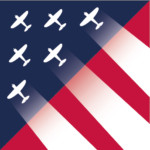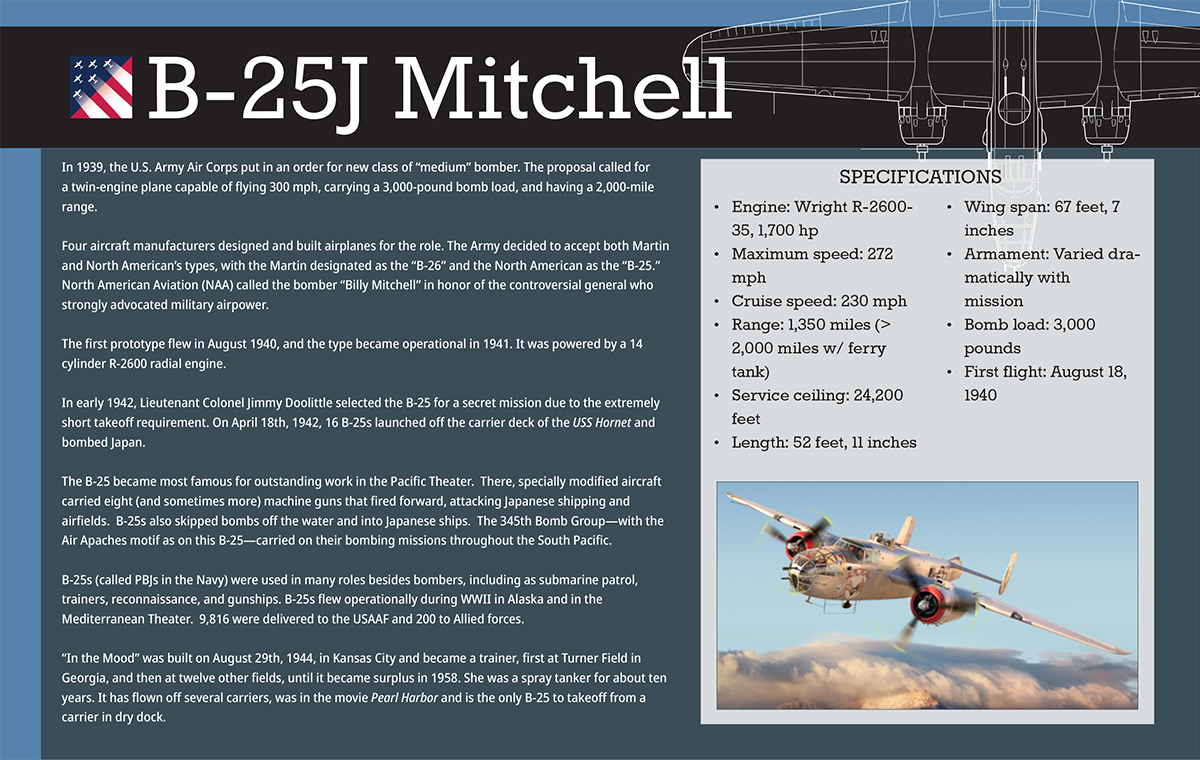In 1939, the U.S. Army Air Corps put in an order for new class of “medium” bomber. The proposal called for a twin-engine plane capable of flying 300 mph, carrying a 3,000-pound bomb load, and having a 2,000-mile range.
Four aircraft manufacturers designed and built airplanes for the role. The Army decided to accept both Martin and North American’s types, with the Martin designated as the “B-26” and the North American as the “B-25.” North American Aviation (NAA) called the bomber “Billy Mitchell” in honor of the controversial general who strongly advocated military airpower.
The first prototype flew in August 1940, and the type became operational in 1941. It was powered by a 14 cylinder R-2600 radial engine.
In early 1942, Lieutenant Colonel Jimmy Doolittle selected the B-25 for a secret mission due to the extremely short takeoff requirement. On April 18th, 1942, 16 B-25s launched off the carrier deck of the USS Hornet and bombed Japan.
The B-25 became most famous for outstanding work in the Pacific Theater. There, specially modified aircraft carried eight (and sometimes more) machine guns that fired forward, attacking Japanese shipping and airfields. B-25s also skipped bombs off the water and into Japanese ships. The 345th Bomb Group—with the Air Apaches motif as on this B-25—carried on their bombing missions throughout the South Pacific.
B-25s (called PBJs in the Navy) were used in many roles besides bombers, including as submarine patrol, trainers, reconnaissance, and gunships. B-25s flew operationally during WWII in Alaska and in the Mediterranean Theater. 9,816 were delivered to the USAAF and 200 to Allied forces.
“In the Mood” was built on August 29th, 1944, in Kansas City and became a trainer, first at Turner Field in Georgia, and then at twelve other fields, until it became surplus in 1958. She was a spray tanker for about ten years. It has flown off several carriers, was in the movie Pearl Harbor and is the only B-25 to takeoff from a carrier in dry dock.


